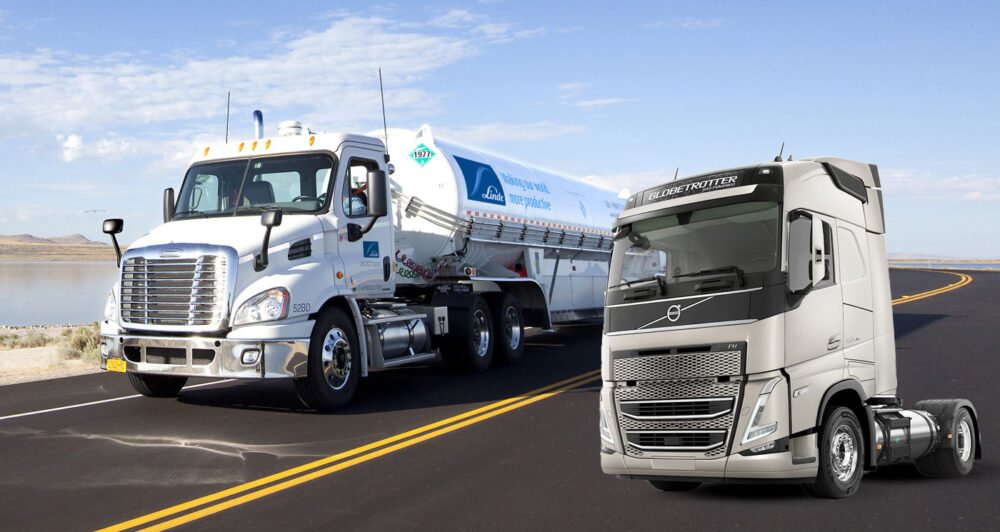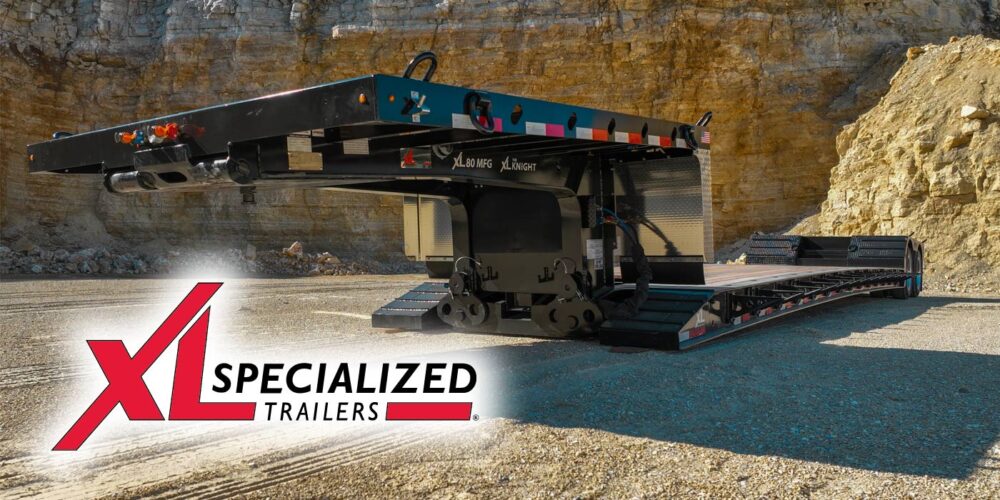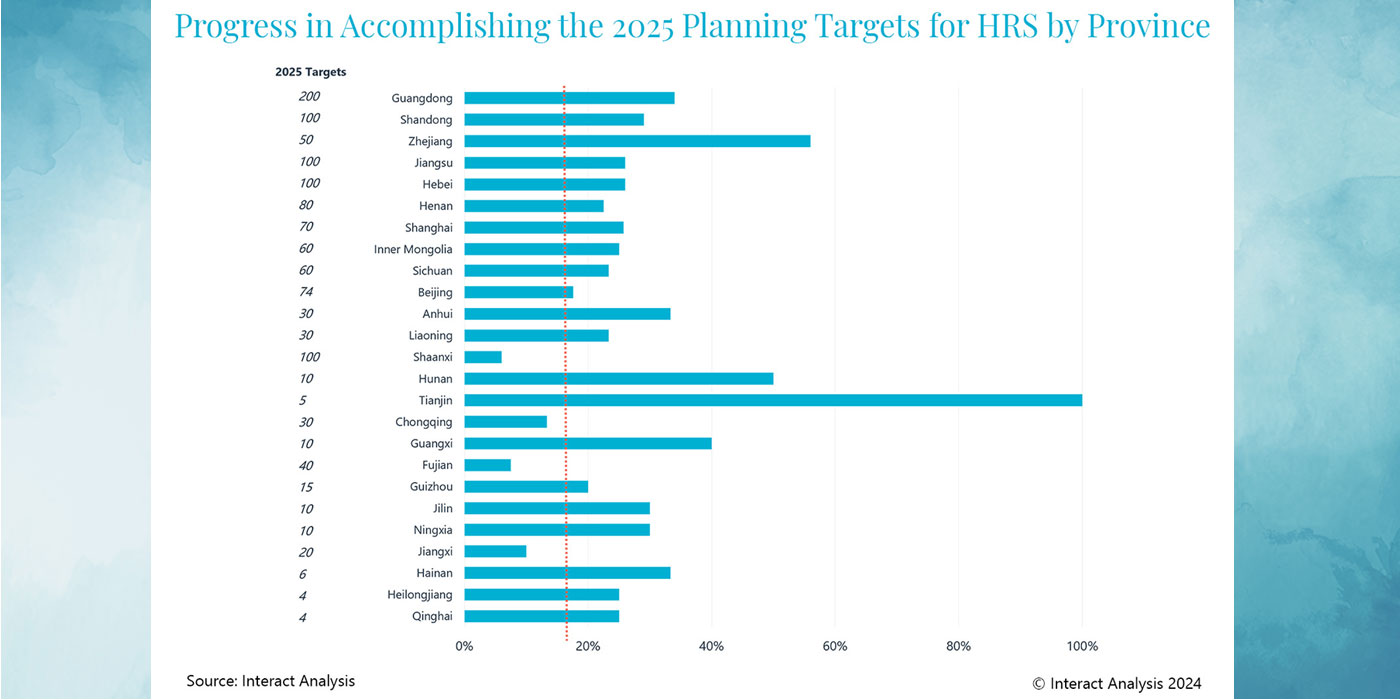The objectives are well defined for Laura Lunt, director, Energy Services, Linde Canada Inc.: “We’re moving toward a lower carbon footprint with significant reductions by 2030 and net-zero by 2050,” she said. “One way we’re committed to improving our environmental performance is by implementing LNG technology in our fleet.”
Linde Canada Inc., a wholly owned subsidiary of industrial gas and engineering company, Linde plc, is currently working with OEM’s to evaluate Class 8 LNG-powered tractors in its long-haul operations. Initially, it expects to have Volvo European FH models with 460-HP Euro 6 step E engines, which can be fueled with renewable Bio-LNG (biogas) or LNG (natural gas), in use in western Canada this year.
“We’re going to be testing the FH alongside our existing diesel Class 8 tractors to measure performance, fuel savings and other operational factors,” Lunt related. “LNG is a solution that is immediately available to start decarbonizing the sector, so we assessed what was available in the global market. We found that while current proven technology is limited, Volvo’s LNG fueling approach has been widely adopted in Europe, so we know the technology will work.
“We knew we wanted to utilize a fit-for-purpose LNG engine build that could perform similar to a diesel tractor,” Lunt continued. “In North America, we rely on Class 8 tractors in our long-haul bulk industrial gas business. Our goal is to utilize these vehicles as a normal part of our fleet in regular transportation lanes.”
Part of the planned evaluation at Linde Canada will mirror the fleet’s routine analysis of vehicle and driver fuel economy and take advantage of its sophisticated logistics and scheduling system that minimizes mileage by providing optimal routing. The company is also working with Volvo and other OEMs to ensure that fueling, parts and maintenance to support LNG tractors are in place, including certification of technicians and appropriate safety measures at designated service locations.
Along with the objective of significantly reducing its fleet’s carbon footprint, Linde Canada sees other value in adopting alternative fuels. For example, there is the impact that the Canadian Carbon Tax and the Canadian Clean Fuel Standard (coming into effect in July 2023) will have on diesel fleet operators. With the price of carbon increasing annually, Lunt pointed out the cost impacts to diesel fuel alone make for a compelling business case to start switching fuels.
Linde Canada also believes that the decision to field LNG tractors will be beneficial to driver recruiting and retention efforts. “In a challenging driver market, the decarbonization of our fleet will be attractive to people who want to work for organizations that are taking real steps to improve sustainability,” Lunt said. “In addition, we understand that the European driver experience has been enhanced by the significant noise reduction and smoother operating characteristics of an LNG engine over its diesel equivalent.
“We recognize that decarbonization needs to be achieved using a multifaceted approach,” Lunt added. “We’re continuously looking at opportunities, which is why LNG engines are something we are excited to pilot. At the same time, part of considering new equipment means finding new ways of working and providing related education and training.”
It is not lost on Lunt as well that as a fuel supplier, North American fleet operators are also looking at Linde Canada as a leader in low carbon transition. The company, she noted, will have an ultra-low carbon LNG product available out of its new facility in Fort Saskatchewan, Alberta. The fuel will immediately provide close to 40% lower carbon intensity than diesel.
Furthermore, Lunt explained that additional carbon impact reduction can be realized by mixing renewable LNG (as a net zero carbon intensity fuel) into conventional LNG, a practice that is in place in Europe.
“We see low technical risk with a significant carbon footprint reduction and large fuel savings now and into the future,” Lunt stated. “The challenge in North America is having a full LNG system available fast enough to accommodate fleet needs.”
Lunt also pointed out that government plays a role in a successful transition as well. The Canadian federal government for example, is assessing fuel switching incentives as part of their Green Freight program.
“We look forward to their support of fleet operators by offering cost incentives that will encourage fuel switching to LNG today, and the adoption of technologies and additional low carbon fuels in the future,” Lunt stated.
Linde Canada anticipates a rapid conversion to LNG and other fuels by fleets who will follow its lead. “We are firmly committed to investing in our planet by working on solutions for the heavy haul transportation sector,” Lunt said.














